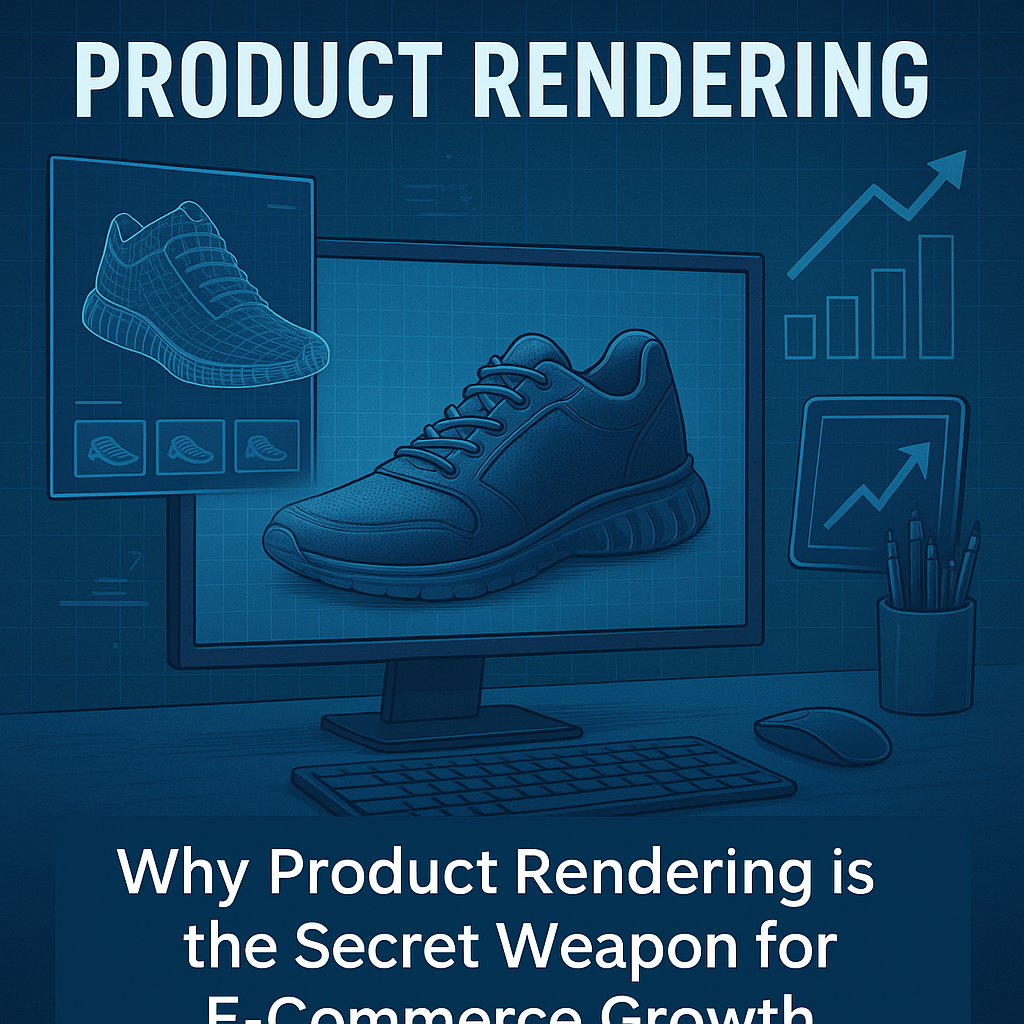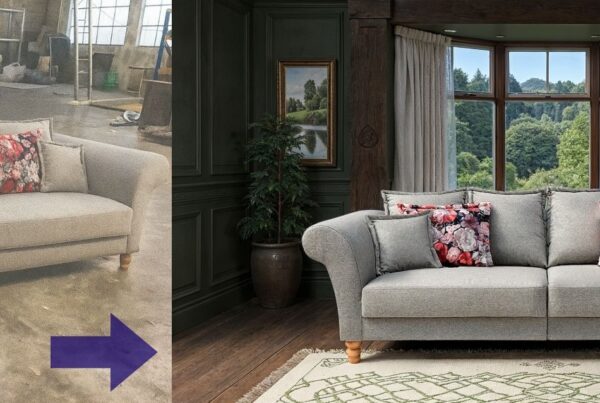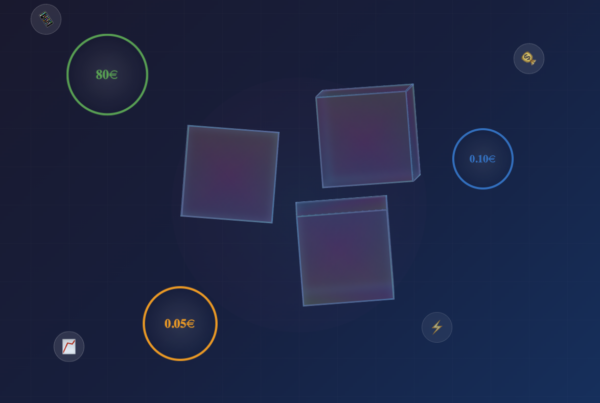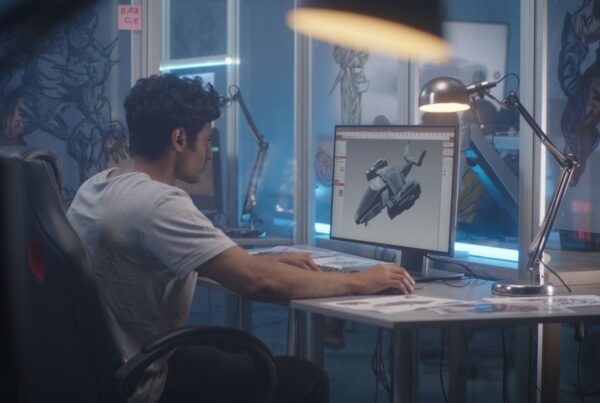3D Product rendering combined with AI is a new way brands produce and display visual material in the current digitally driven era. Forget costly photoshoots and flat images—today’s e-commerce front-runners are embracing 3D technology to create realistic visuals that are cost-effective, flexible, and designed to scale. Whether A crisp silo image, a luxurious lifestyle scene, or an interactive 3D/AR experience, the rendered images create bringing products to life in a way that conventional photography just can’t.
This change isn’t solely for looks—it’s a strategic transition. With quicker production schedules, simplified material variety, and increased customer interaction, product rendering gives companies the ability to fulfill increasing content demands while improving conversions and minimizing returns. From large retailers to independent sellers, increasingly more brands are adopting this new-gen visual solution in order to remain competitive in today’s competitive online environment. In this article, we’ll break down what product rendering is, how it works, and why it’s becoming essential for modern e-commerce success.
What Is Product Rendering and How Does It Work?
Product rendering is the revolution of visual content digitally. Rather than staging complex photo shoots or producing physical prototypes, brands are now able to generate photorealistic images with just a few 2D images. With the power of AI and 3D technology, the process converts flat images into high-resolution dynamic 3D models, and then the representations are made in several visual formats. What is exciting about this for e-commerce is the flexibility. Want ten different colorways? An additional background for each season? With product rendering, just a few clicks!
Platforms like Mazing even provide AI-based renderings that automatically generate silo images or lifestyle scenes from prompts—no studio required. The actual magic is the way that these assets are adaptable. Rendered images can be reused for online shops, social media, ads, and even 3D and AR interfaces. You’re constructing a visual content engine from a single data set—reusable, adaptable, and amazingly efficient. Ultimately, product rendering is not only about good looks—it’s about control. It gives the visual storytelling in the hands of designers and marketers, with reduced costs and quicker turnarounds while providing assets that speak truly to today’s digitally-first consumers.
The Evolution from Traditional Photography to 3D Product Rendering
Let’s be realistic: traditional product photography is beginning to age. Planning shoots, sending samples, coordinating lighting, props, and editing—is a logistics maze. And for the worst, once the picture is snapped, that’s it. Want a different background or perspective? Be ready to rebuild from scratch.
Come into 3D product rendering—a new-age solution that reverses the script. Rather than being bound to Static visuals, companies now design dynamic, editable digital assets. To alter the product color, Swap the backdrop, or produce a holiday version? No reshoot needed. Just open the file and render what is needed. This transformation did not occur overnight. It resulted from the growth of e-commerce and the demands of social media and the requirement for visual velocity. With online selling accelerating rapidly, businesses required more material quicker—and more affordable.
That’s where companies like Mazing stepped in, providing scalable rendering from 2D photographs with incredible precision. Not only is rendering quicker and less expensive, but it also allows interactive formats such as 360° views and WebAR, letting shoppers engage with products as if they’re physically there. That’s a game changer. \Today, transitioning from photography to rendering is not only a technical upgrade—it’s a strategic move. aligns with the way consumers now shop and the way nimble brands operate.
Test MAZING 2D to 3D AI Tool Today!
Types of Product Renderings: Silo, Lifestyle, and 3D/AR Visuals
There is no one size when it comes to visual marketing—and product rendering gets that. It allows brands to customize visuals for particular channels, campaigns, and journeys. The top three most used types?
Silo images, lifestyle shots, and interactive 3D/AR visuals. Silo images are product-only shots with no background—ideal for lists, catalogs, and online marketplaces like Amazon. They display your product consistently and clearly, in various angles and variations. With rendering, you’re able to create dozens instantly, rather than through physical photography.
And then there’s lifestyle rendering, in which the product is placed in a real-world environment—say, a sofa in a living room or sunglasses on the beach. They evoke emotions, convey stories, and drive engagement. AI-generated counterparts from Mazing enable the generation of whole campaigns from the use of a model and a prompt.
And last, but not least, 3D/AR viewers. These enable customers to spin, zoom, and even put the product in their house with augmented reality. The outcome? Increased engagement and reduced return rates. No wonder WebAR brands experience up to 45% more conversions.
Each has a different use, and with rendering, you’re not confined to any of them. You’re free to blend, combine, and use the ideal image for any situation—and do so quicker than ever.
Why Product Rendering Outperforms Traditional Photography in E-Commerce
Let us analyze the figures. Conventional photography is good for quality, but at steep expenses, scheduling pains, and no flexibility. Conversely, 3D product rendering makes all of them Constraints into superpowers—particularly for e-commerce.
To begin with, you can lower production costs as much as 80% with rendered silo or lifestyle photographs. No studio rentals. No shipping hassles. Just post a couple of photographs, and sites like Mazing take care of rest. And when you’re scaling? Rendering is a scale-friendly process—batch rendering hundreds of visuals across product lines, or even seasonal campaigns, is not only possible, but the norm.
However, it is not just about money savings. Time-to-market is drastically reduced. Flash requires visual sale next week? New renders are yours in hours, not days. Agility like that is competitive HIV
Also, rendering supports virtually limitless variations. Want to A/B test various colors and backgrounds? Go ahead. Desire a winter and a summer scene? No problem. Such adaptability is not possible with traditional photographs.
Product rendering is designed for scalability and speed in the fast-paced, hungry-content age and storytelling—three things conventional photography just can’t match.
How Product Rendering Increases Conversions and Reduces Returns
Online shopping is uncertain. “Will this fit in my room?” “Is that the actual shade?” “How does that actually feel?” look up close?” These questions encourage hesitation—and that is fatal for conversions. That is where 3D/AR production rendering comes in.
By engaging with virtual representations that are as realistic as possible, customers’ visuals provide unparalleled clarity. Amazon has said that simply activating “View in Your Room” or AR Features can double purchase rates. Individuals are more inclined to purchase when they know what they’re receiving—and less inclined to give it back.
Even studies conducted at the academic level corroborate this. As part of a collaboration with the University of Applied Krems Sciences, shoppers experiencing AR-boosted shopping enjoyed 42% greater purchase intent and 38% with a superior customer experience than the ones with only 2D images.
Platforms such as Mazing push this even further through the integration of AI rendering with experiences. The outcome? Up to -15% lower product return rates reported from online stores and stunning revenue growth. As an example, Art-Mind Shop enjoyed more than €6,000 extra revenue per best-seller by switching to rendered visuals.
So it is not only about being cool—product rendering actually reaches the bottom line and is therefore a sensible investment for any web-based retailer.
Step-by-Step Guide: How to Convert a 2D Image into a 3D Model with AI
There has never been an easier time to convert a 2D image into a 3D model, with AI tools on the job. No matter which one you choose, Mazing, Meshy AI, or Sloyd AI, the process is easy yet effective. The following is a step-by-step guide to get started:
Step 1: Choose the Right AI 3D Model Generator
The ideal tool for AI 3D model design will depend on your needs. Mazing is ideal for online stores and businesses due to its frictionless 3D commerce integration. If you would prefer more control over the design, then Sloyd AI comes with parametric modeling and is suitable for game items and digital assets.
Step 2: Upload a 2D Image or Multiple Angles
Once you have chosen your tool, upload a 2D image of the object that you want to transform. Some platforms allow several images from different angles, making it more accurate. AI scans the depth, texture, and structure of the image to recreate a 3D model.
Step 3: AI Processing and Model Generation
The AI system will take a few seconds to a minute to process the image and create a 3D model. Advanced software like MAZING AI uses machine learning-based algorithms to predict missing data, delivering an improved and high-quality result.
Step 4: Enhance the Model with Designers
If you require hyper-realistic 3D images, you can utilize Mazing’s AI model enhancement process to improve textures and meshes. As AI is not perfect, this step is recommended if you want to use the models for e.g. product configurators.
Step 5: Adjustments & Export the 3D Model
Export in a format like STL, OBJ, or glTF, depending on what you’re going to use it for—3D printing, gaming, or augmented reality applications.
Success Stories: Brands Growing with 3D and AR Product Renderings
Numerous brands already benefit from the advantages of 3D and AR product rendering. Here are a few showcased standout examples outlining the tangible impact:
Art-Mind Shop
- Switched to Mazing’s 3D/AR viewer
- Reached +42% conversion rates and €6,000+ additional income per best-seller.
- Quote from the CEO: “Stop the A/B test–we’re losing money on the old version.”
Modus Furniture (B2B)
- Utilizes thousands of 3D models across retail platforms.
- Offers AR previews rather than relying upon expensive showrooms.
- Benefits include:
- Stronger retailer relationships
- Increased sales and sharp decline in the return rate
- Positioned as a leader in innovation within the furniture industry
Affordable Furniture
- Distributed 100 in-store AR-enabled cards
- Outcome: 700% rise in web-based transactions
- Demonstrated that WebAR can seamlessly integrate physical and virtual sales
These companies didn’t just “experiment with” rendering—they integrated it into their strategy and witnessed transformational outcomes.
Affordable Product Rendering Options for Online Stores
It is no longer necessary to have a Hollywood budget to make top-notch 3D visuals. Now, you have affordable solutions provided by Mazing for companies of all sizes:
Silo Renderings
- Background-free, clean product images
- €0.10 per image (based on volume)
- Suitable for Amazon product listings, Shopify, and others
AI-Based Lifestyle Visualizations
- Just give me a prompt and product picture
- From just €10 per rendering
- Useful for campaign visuals, social media, and narrative graphics
Handcrafted Lifestyle Illustrations
- Developed with a creative brief
- Print and high-end advertising premium quality
- From €350 for each rendering
3D/AR Viewers
- 360° interactive product models with augmented reality integration
- From €0.05 per viewer, based off of quantity
- Increases engagement, creates interactivity, and lowers returns.
Thanks to these flexible prices, 3D creative production is no longer a luxury—it’s an affordable, scalable solution for any online shop to heighten their visual strategy.
Test MAZING 2D to 3D AI Tool for Free






